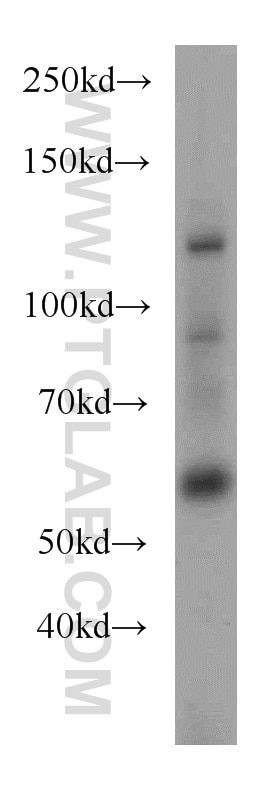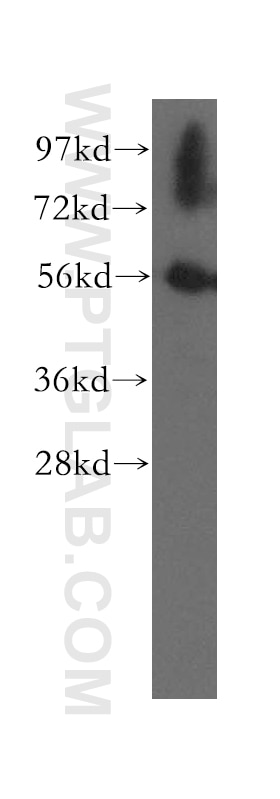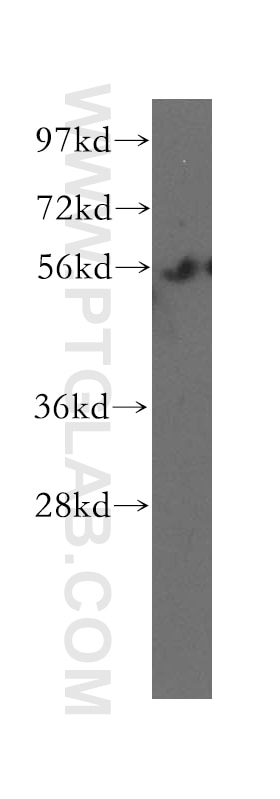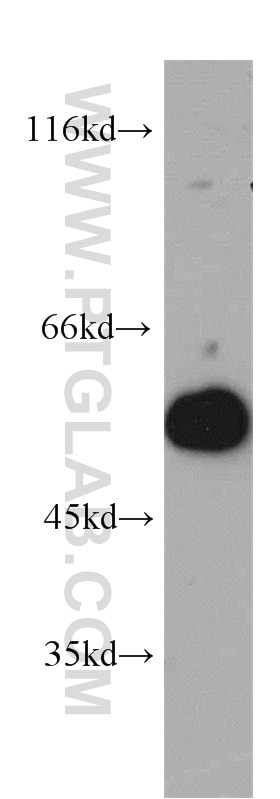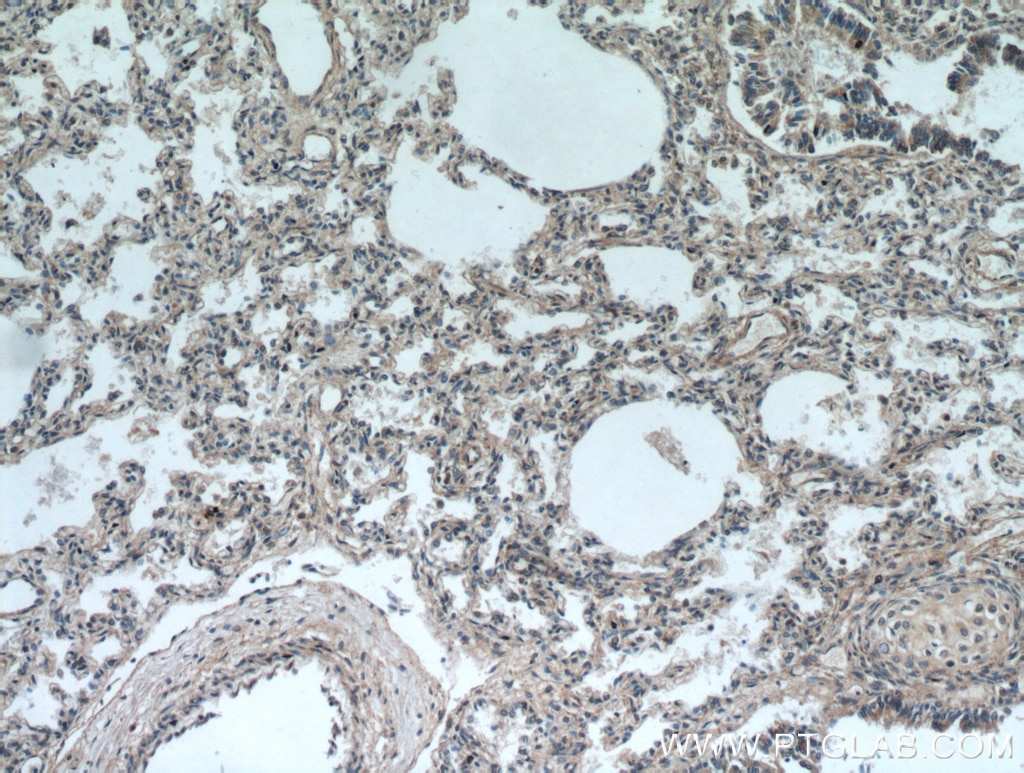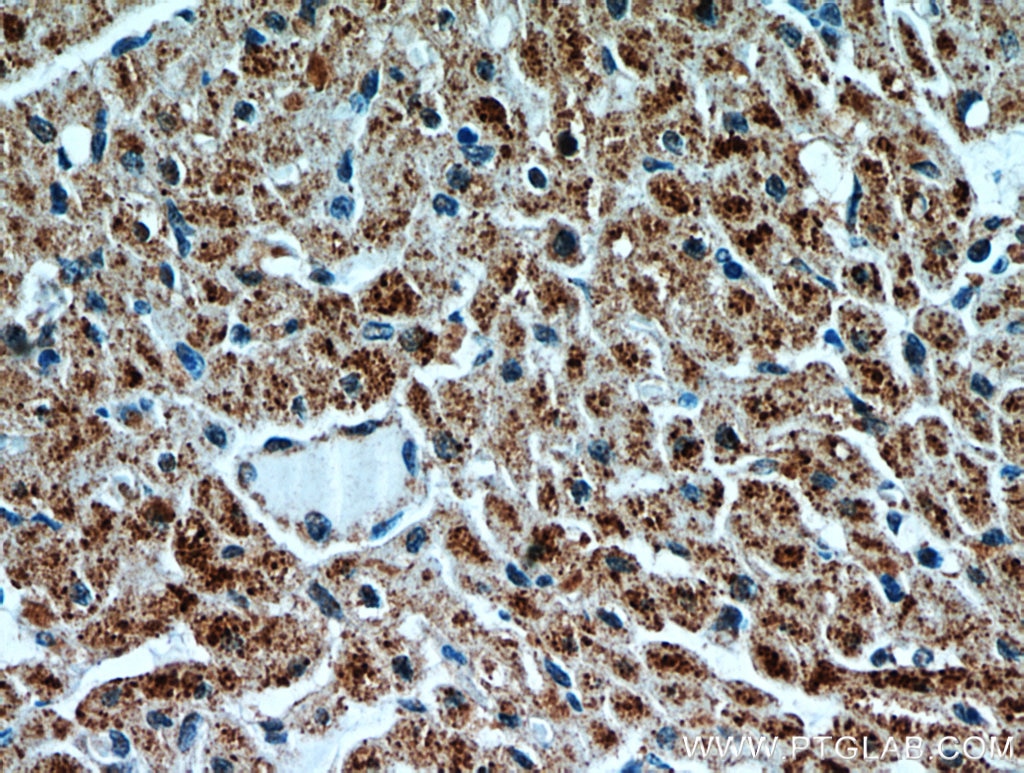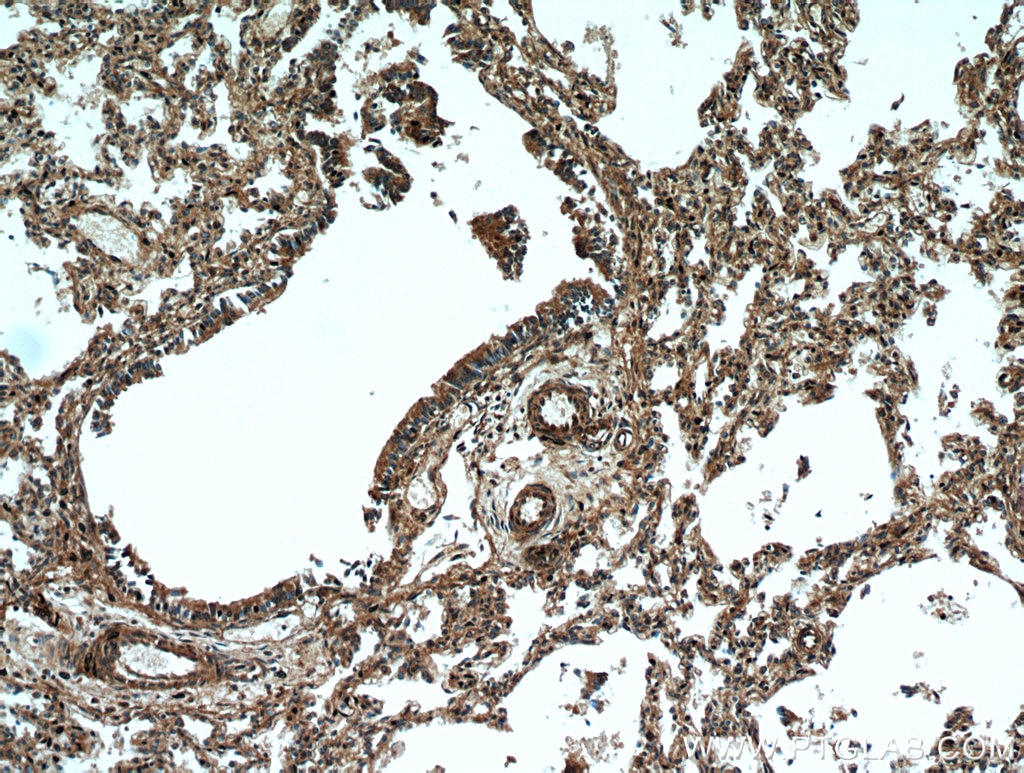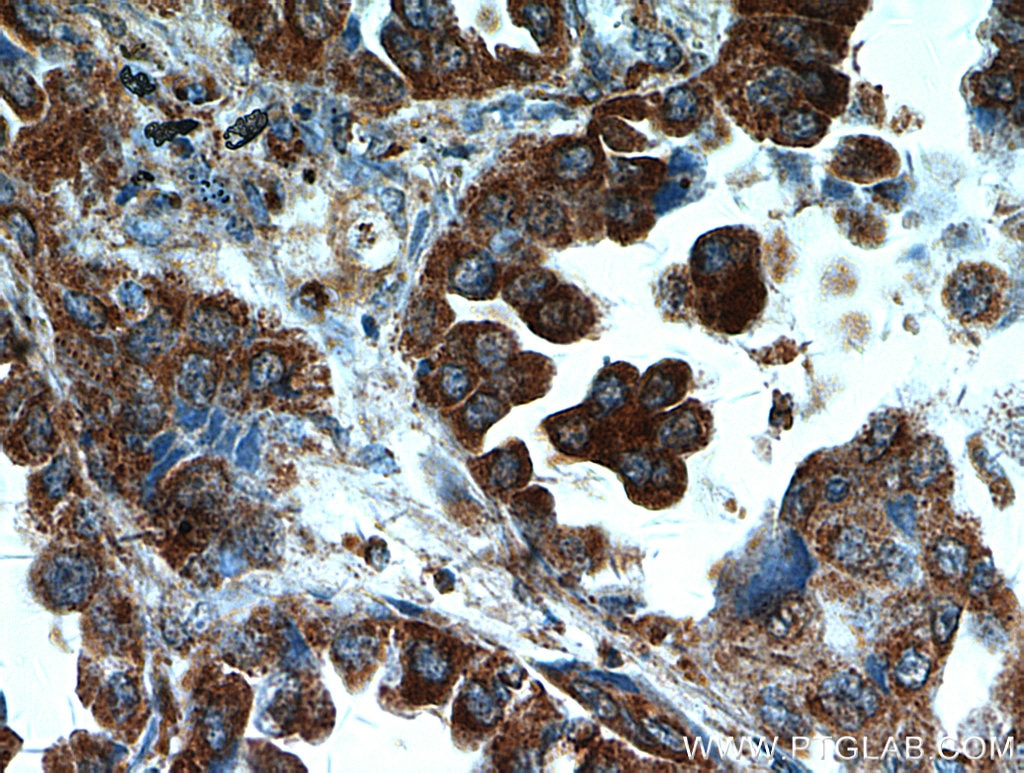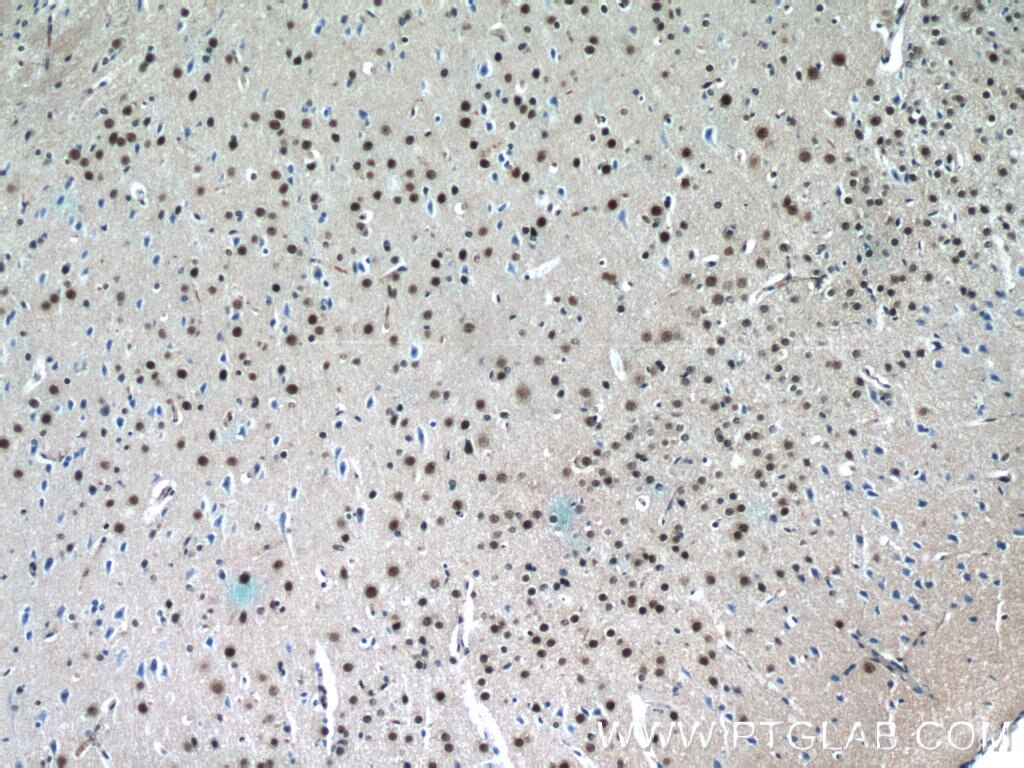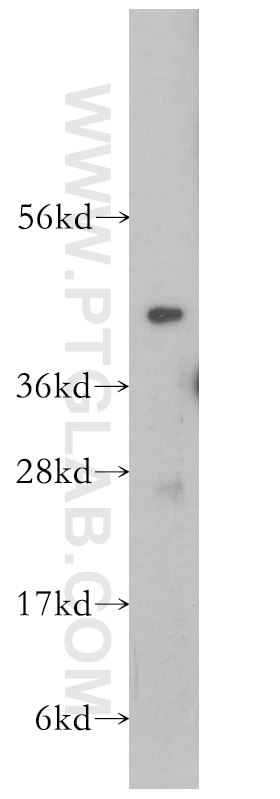- Phare
- Validé par KD/KO
Anticorps Polyclonal de lapin anti-UBAP1
UBAP1 Polyclonal Antibody for WB, IP, IF, IHC, ELISA
Hôte / Isotype
Lapin / IgG
Réactivité testée
Humain, rat, souris
Applications
WB, IHC, IF/ICC, IP, ELISA
Conjugaison
Non conjugué
N° de cat : 12385-1-AP
Synonymes
Galerie de données de validation
Applications testées
| Résultats positifs en WB | tissu cardiaque humain, cellules A431, cellules Y79, tissu cérébral de souris, tissu de thymus de souris, tissu pulmonaire de souris, tissu pulmonaire humain, tissu splénique humain, tissu testiculaire de souris, tissu testiculaire humain |
| Résultats positifs en IP | tissu cérébral de souris |
| Résultats positifs en IHC | tissu de cancer du poumon humain, tissu cardiaque humain, tissu pulmonaire humain il est suggéré de démasquer l'antigène avec un tampon de TE buffer pH 9.0; (*) À défaut, 'le démasquage de l'antigène peut être 'effectué avec un tampon citrate pH 6,0. |
| Résultats positifs en IF/ICC | cellules HeLa |
Dilution recommandée
| Application | Dilution |
|---|---|
| Western Blot (WB) | WB : 1:500-1:2400 |
| Immunoprécipitation (IP) | IP : 0.5-4.0 ug for 1.0-3.0 mg of total protein lysate |
| Immunohistochimie (IHC) | IHC : 1:50-1:500 |
| Immunofluorescence (IF)/ICC | IF/ICC : 1:10-1:100 |
| It is recommended that this reagent should be titrated in each testing system to obtain optimal results. | |
| Sample-dependent, check data in validation data gallery | |
Applications publiées
| KD/KO | See 3 publications below |
| WB | See 16 publications below |
| IF | See 1 publications below |
| IP | See 2 publications below |
Informations sur le produit
12385-1-AP cible UBAP1 dans les applications de WB, IHC, IF/ICC, IP, ELISA et montre une réactivité avec des échantillons Humain, rat, souris
| Réactivité | Humain, rat, souris |
| Réactivité citée | Humain, souris |
| Hôte / Isotype | Lapin / IgG |
| Clonalité | Polyclonal |
| Type | Anticorps |
| Immunogène | UBAP1 Protéine recombinante Ag3055 |
| Nom complet | ubiquitin associated protein 1 |
| Masse moléculaire calculée | 502 aa, 55 kDa |
| Poids moléculaire observé | 55 kDa |
| Numéro d’acquisition GenBank | BC020950 |
| Symbole du gène | UBAP1 |
| Identification du gène (NCBI) | 51271 |
| Conjugaison | Non conjugué |
| Forme | Liquide |
| Méthode de purification | Purification par affinité contre l'antigène |
| Tampon de stockage | PBS avec azoture de sodium à 0,02 % et glycérol à 50 % pH 7,3 |
| Conditions de stockage | Stocker à -20°C. Stable pendant un an après l'expédition. L'aliquotage n'est pas nécessaire pour le stockage à -20oC Les 20ul contiennent 0,1% de BSA. |
Informations générales
UBAP1, also named as NAG20, is a 55 kDa protein which contains 2 putative tandem UBA domains at the C terminus, a coiled-coil domain, 2 possible N-glycosylation sites, 5 PKC phosphorylation sites, 7 casein kinase II phosphorylation sites, and 3 N-myristoylation sites. UBAP1 might be a potential effective diagnosis candidate for NPC and decreased expression of UBAP1 protein is a possible point of dysfunction along the pathogenesis pathway for NPC that may contribute to malignant transformation.
Protocole
| Product Specific Protocols | |
|---|---|
| WB protocol for UBAP1 antibody 12385-1-AP | Download protocol |
| IHC protocol for UBAP1 antibody 12385-1-AP | Download protocol |
| IF protocol for UBAP1 antibody 12385-1-AP | Download protocol |
| IP protocol for UBAP1 antibody 12385-1-AP | Download protocol |
| Standard Protocols | |
|---|---|
| Click here to view our Standard Protocols |
Publications
| Species | Application | Title |
|---|---|---|
EMBO J A Pseudomonas aeruginosa TIR effector mediates immune evasion by targeting UBAP1 and TLR adaptors. | ||
Curr Biol UBAP1 is a component of an endosome-specific ESCRT-I complex that is essential for MVB sorting. | ||
Cell Rep ESCRT-I protein UBAP1 controls ventricular expansion and cortical neurogenesis via modulating adherens junctions of radial glial cells | ||
Cell Rep The Dynamics of TGF-β Signaling Are Dictated by Receptor Trafficking via the ESCRT Machinery. | ||
Cell Rep Interplay of Endosomal pH and Ligand Occupancy in Integrin α5β1 Ubiquitination, Endocytic Sorting, and Cell Migration. |


